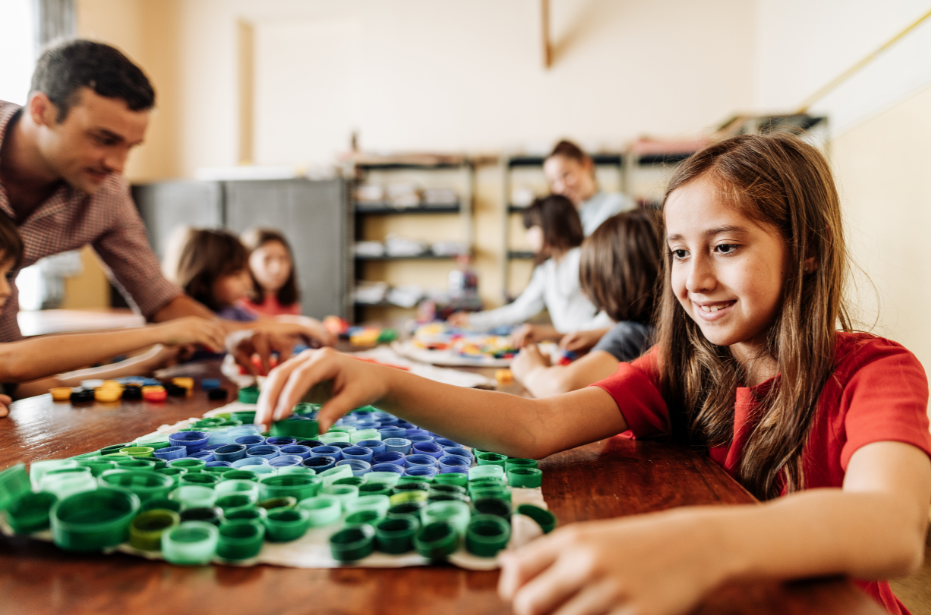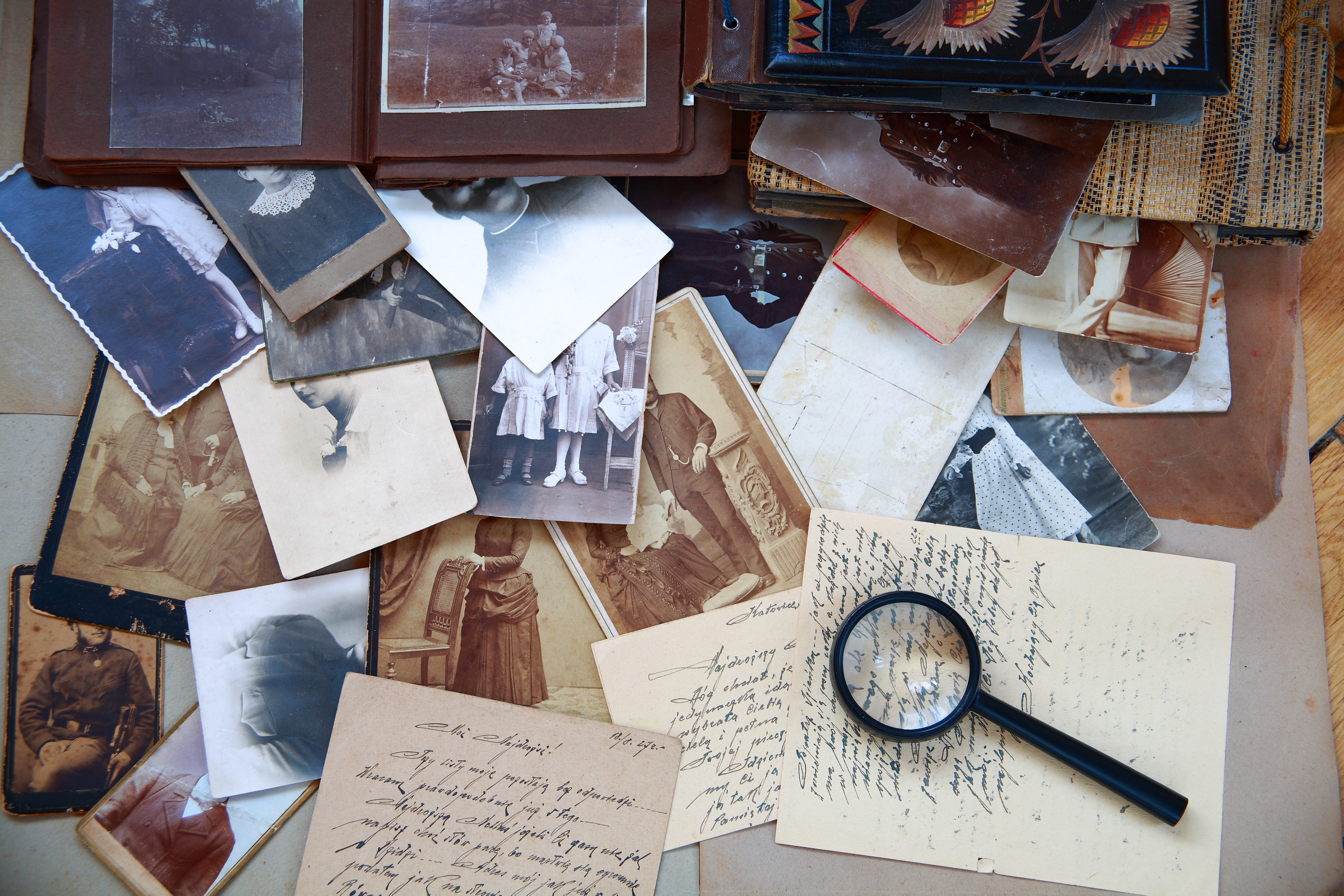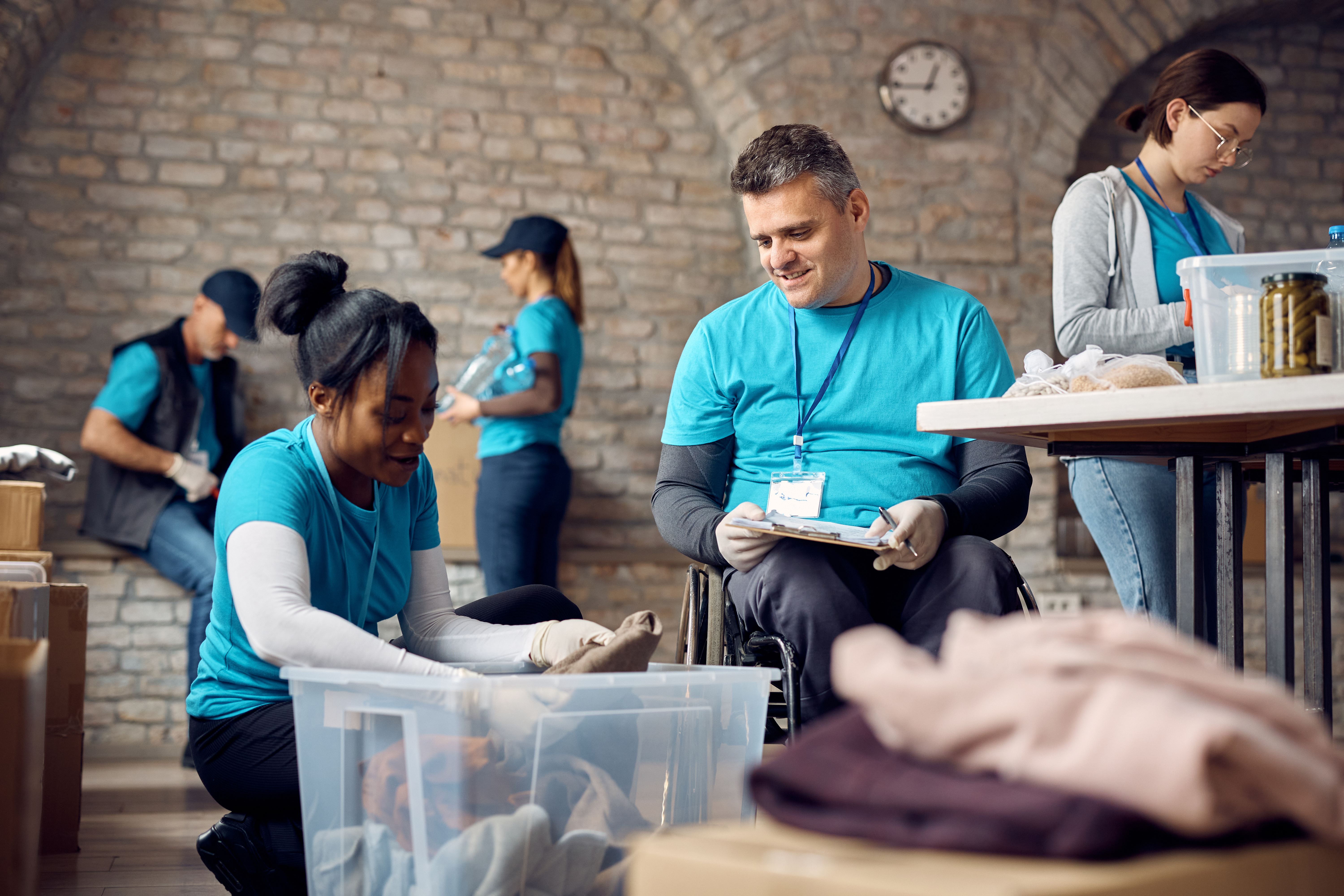Article | Arts in Health Disaster Recovery
Article | Arts in Health Disaster Recovery

INTRODUCTION
During trying times, when local health services may be strained or overwhelmed due to emergent physical needs in communities, art can be an integral part of disaster recovery efforts. Art can be a pathway for recognizing common stress responses to trauma and can provide some beneficial ways to cope with it.1
STRESS RESPONSE TO DISASTER
When a disaster strikes, the human body naturally responds to that stress to ensure survival of the traumatic event. First, adrenal glands produce hormones that result in a flight, fright or freeze reaction. Adrenaline increases heart rate, opens lung airways and keeps us alert and on the ready. Endorphins are also released which can help relieve pain from injury. Finally, cortisol is released to increase sugars in the blood for fast energy for sustained physical activity during a disaster response. These normal physical responses to traumatic stress are beneficial during the
event itself. However, prolonged production of these stress hormones can have long-term negative effects on the body.2
During and post disaster, it is normal to have occasional feelings of anger, despair, fear, frustration, helplessness, powerlessness, sadness or shock. It is also normal to have occasional unwelcome negative thoughts, lowered self-esteem, confusion, forgetfulness or guilt. If these symptoms do not pass with
time or if they begin to significantly impact your daily function, there may be cause for concern or seeking professional help. More serious anxiety, depression, PTSD and substance use disorders are often triggered
or worsened during disasters because of prolonged stress that causes foggy thinking/concentration loss, extreme thoughts or being constantly fearful of potential or ongoing dangers. Recognizing these normal
stress responses3 and addressing them early through regular self-care and healthy stress management can help you become more resilient after a weather-related or other sudden disaster.
HOW ART CAN HELP
Studies have shown that art-making can increase calm and feelings of security and decrease cortisol levels, helping to restore emotional balance4. For families who have been displaced from their homes or experienced loss of livelihood or loved ones, a creative outlet can provide a channel for processing and expressing emotions in a productive way. When so much must be left in the hands of others, art is something that is in the control of the maker and can help individuals and communities take their power back.5 Read on to discover art practices that have been shown to provide wellness benefits.
Expressive Journaling
It may be helpful to write about your experience as a low-cost, low-risk way to begin processing what happened.6 Get your story out in a journal or blog. Write down your experience of what happened in chronological order. Your memory of what happened may be jumbled at first and you may remember details later, or your memories might be so vivid that they distract you from getting little else done or getting much needed rest.
Mindful Art-Making
Various forms of art-making are inherently mindful, reinforcing a mind-body connection by reducing distractions and focusing on the present moment and task at hand. This has been shown to increase feelings
of relaxation by decreasing heart rates.7 Regular mindfulness practice can enhance emotional awareness by making it easier to recognize emotions as they are experienced.8 This recognition can promote healthier and more productive responses to those emotions, including recognizing patterns or trends of negative emotions that may require intervention.
Storytelling and Oral Histories
Tap into existing oral history traditions by telling stories and listening to the stories of others. In the days after a disaster, you may be asked to recount your experience to friends and loved ones many times. If you are not comfortable sharing your story at first, it may get easier to speak about your loss with each telling. If you are find that sharing your experience comes easily, you can use your voice to bring attention and resources to your community after a disaster. You may find that talking to a loved one or trusted professional
is beneficial or even necessary. Sharing stories provides an opportunity for others to offer empathy and support in hard times.9
Being an active listener is a learned skill and additional training can help you master the art of collecting official oral histories through interviews, audio and video recording and transcription. Documenting these significant events from a primary source while they are still unfolding will capture and preserve the
community’s unique perspectives, insights and memories.10
Drawing/Doodling
If you struggle to tell your story through words, drawing or even coloring could be beneficial. Doodling, sketching or creating repetitive patterns on paper (as in a mandala or calligraphy)11 reinforce a mind/body/nature connection and can be emotionally grounding in times of great stress. Other observed benefits of drawing include increases in ability to compromise and tolerate frustration, and positive attitude.12
Planning Journals
Try composing a to-do list or a list of daily accomplishments in an art journal at the beginning or end of each day, along with important contact numbers of aid resources and a few thoughts about your current
feelings and next steps. This can give a sense of direction and agency in situations that seem to be spiraling out of control. The days immediately after a disaster will be chaotic and it will be helpful to be organized and deliberate about where to direct your energy.
A planning journal can be the place where
you create a plan of action13 that will help you
achieve your goals.
Collage/Scrapbooking
It may be possible to create art collages from scraps of ruined books, photos, letters, recipe cards and bits of fabric to honor loved ones and the experiences they represent. Research shows that loss of sentimental items in a disaster can increase risk for depressive symptoms and PTSD.14 Creating new sentimental objects, when other keepsakes have been lost, can remind us that new memories are continually made and
cherished.
Photography
Photography provides valuable documentation of daily recovery and a record of information that can be referred to in the days after a disaster. But the true value in photographs might lie in the emotion that they can convey and the stories that they tell. You can use a camera to take artful photos while you are surveying and documenting damage. Move your body and camera around to capture unusual angles and viewpoints or capture interesting juxtapositions of items.
You could focus on portraiture of your loved ones or create a selfie series that tells the story of your experience through images. Care, dignity and respect must be given and consent acquired when photographing
human subjects.15
Artful Organizing
The mess a disaster leaves behind is harmful in more ways than one. Chemicals, bacteria and mold are well known to be detrimental to physical health, but perhaps less well known is that even looking at clutter has been shown to increase feelings of anxiety.16 In addition, parting with damaged sentimental objects may prove difficult, yet necessary, and be eased with the support of a trusted friend.17
Cleaning and organizing your space after a disaster may provide some relief from those symptoms. “Organized” does not have to mean the same thing as “minimalist”. Objects displayed in our homes, especially sentimental items and photographs, not only connect us with memories and experiences, but also create a strong sense of identity. Inspiration for low-cost organization ideas are plentiful online. Being intentional about the items we surround ourselves with and how they are displayed or organized will create a
space that you can be proud of, be relaxed in, and inspire you to tackle future challenges - even if you start small, with a single area.
Visioning/Mind-mapping
Use art to look forward. It will be easy to focus on the destruction and losses and much more difficult to realistically assess current assets and the path forward. Take current stock of where you are and what your goals are in order to make a plan for building back better. Vision boards are a great tool for focusing on where you are headed and are often employed in tandem with therapeutic programs for mental health. Mind-mapping, a type of visual brainstorming with drawings and pictures, can be used collaboratively to
help you and others organize future plans.18
Music-Making/Listening
Soothing sounds have been used throughout human history to provide calm in anxious times. Likewise, it is also well-known that different types of music can have differing effects to moods19 and can sometimes provoke memories. A sad song, for instance, might provide a safe space and limited period of time for one to acknowledge and express their feelings of sadness. Conversely, an upbeat song might be a catalyst for getting energized or motivated to complete a task.
Art Events
Cultural and Art Institutions traditionally provide places for creative community conversations. After a disaster, these gathering spaces become more important. Plan an arts event to increase hope, solidarity,
wholeness and even funds within your community.20 Pot-lucks and arts entertainment can be organized without excessive cost and give necessary periods of distraction and feelings of comfort to individuals and
communities during ongoing disaster recovery. Check with your State Arts Council for curated lists of artists and performers that promote local cultural assets.21
Rest
Disaster recovery will be a marathon, not a sprint to the finish line. Periodic rest will be necessary to refresh and recharge from emotional and physical stress.22 Take a break and engage your senses by doing something you enjoy like reading a book, or listening to music.
Even taking a walk outside, in an undisturbed place could be beneficial. Nature-exposure has been shown to relieve pre- and post disaster stress effects and loss of cultural and place identity, as well as providing a broad range of other health benefits.23
Art for Everyone
You do not have to be currently suffering from a disaster to reap the rewards that will come from art-making. You also do not have to be an “artist” or a part of an arts organization to enjoy the wellness benefits that the arts offer. Broadening your definition of “art” beyond paintings on a wall will help you recognize that art is all around us. At any skill level, there
are ways to inject beneficial creative practices into your daily routine.
Will you start today?
If you or a loved one is experiencing emotional distress after a disaster, you are not alone.
PLEASE REACH OUT FOR HELP:
Substance Abuse and Mental Health Services Administration (SAMHSA) Disaster Distress Helpline
is a 24/7, 365-day-a-year crisis counseling and support line to people experiencing emotional distress related to natural or human-caused disasters. 1-800-662-HELP (4357)
https://www.samhsa.gov/find-help/disaster-distress-helpline
Red Cross Disaster Relief and Recovery Services – Recovering Emotionally
provides information and tips for taking care of mental health needs after disaster strikes.
https://www.redcross.org/get-help/disaster-relief-and-recovery-services/recovering-emotionally.html
Federation of Appalachian Housing Enterprises (FAHE) - Kentucky Access to Recovery
offers free recovery support services for low-income individuals recovering from Opioid Use and/or Stimulant Use Disorder in six KY regions.
https://fahe.org/access-to-recovery/
988 Suicide & Crisis Lifeline
provides 24/7 free and confidential emotional support
to people in suicidal crisis or emotional distress. Dialing 988 now routes to the
National Suicide Prevention Lifeline number (1-800-273-8255).
https://www.988lifeline.org
View the other publications in this series:
http://blueprintkentucky.mgcafe.uky.edu/arts-disaster-recovery
REFERENCES
- Penelope P. Orr, Art therapy with children after a disaster: A content analysis, The Arts in Psychotherapy, Volume 34, Issue 4, 2007, Pages 350-361, ISSN 0197-4556, https://doi.org/10.1016/j.aip.2007.07.002. https://www.sciencedirect.com/science/article/pii/S0197455607000640
- Chronic Stress Puts Your Health At Risk. Mayo Clinic Website. July 8, 2021. https://www.mayoclinic.org/healthy-lifestyle/stress-management/in-depth/stress/art-20046037
- Extension and Mental Health Resiliency During Times of Disaster and Recovery: A Seven Part Series, Extension Disaster Education Network (EDEN), https://extensiondisaster.net/wp-content/uploads/2021/09/Combinednewversion.pdf
- Richard Sima, Arts in the Aftermath: Helping Kids Heal from Natural Disasters, International Arts + Mind Lab (IAM Lab), https://www.artsandmindlab.org/arts-in-the-aftermath-of-natural-disasters
- Keeton CP, Perry-Jenkins M, Sayer AG. Sense of control predicts depressive and anxious symptoms across the transition to parenthood. J Fam Psychol. 2008 Apr;22(2):212-21. doi: 10.1037/0893-3200.22.2.212. PMID: 18410208; PMCID: PMC2834184.
- Sohal M, Singh P, Dhillon BS, Gill HS. Efficacy of journaling in the management of mental illness: a systematic review and meta-analysis. Fam Med Community Health. 2022 Mar;10(1):e001154. doi: 10.1136/fmch-2021-001154. PMID: 35304431; PMCID: PMC8935176. https://www.ncbi.nlm.nih.gov/pmc/articles/PMC8935176/
- Kirk U, Axelsen JL. Heart rate variability is enhanced during mindfulness practice: A randomized controlled trial involving a 10-day online-based mindfulness intervention. PLoS One. 2020 Dec 17;15(12):e0243488. doi: 10.1371/journal.pone.0243488. PMID:33332403; PMCID: PMC7746169. https://www.ncbi.nlm.nih.gov/pmc/articles/PMC7746169/
- Wielgosz J, Goldberg SB, Kral TRA, Dunne JD, Davidson RJ. Mindfulness Meditation and Psychopathology. Annu Rev Clin Psychol. 2019;15:285–316. https://www.ncbi.nlm.nih.gov/pmc/articles/PMC6597263/
- S. Nagamatsu, Y. Fukasawa, and I. Kobayashi, Why Does Disaster Storytelling Matter for a Resilient Society?, J. Disaster Res., Vol.16, No.2, pp. 127-134, 2021. https://www.jstage.jst.go.jp/article/jdr/16/2/16_127/_pdf
- Zhu Z, Wang R, Kao HS, Zong Y, Liu Z, Tang S, Xu M, Liu IC, Lam SP. Effect of calligraphy training on hyperarousal symptoms for childhood survivors of the 2008 China earthquakes. Neuropsychiatr Dis Treat. 2014 Jun 3; 10:977-85. doi: 10.2147/NDT.S55016. PMID: 24940061; PMCID: PMC4051712. https://www.ncbi.nlm.nih.gov/pmc/articles/PMC4051712/
- How to Do Oral History. Smithsonian Institution Archives. https://siarchives.si.edu/history/how-do-oral-history
- David L. Sitzer, Ann B. Stockwell, The art of wellness: A 14-week art therapy program for at-risk youth, The Arts in Psychotherapy, Volume 45,2015, Pages 69-81, ISSN 0197- 4556, https://doi.org/10.1016/j.aip.2015.05.007 . https://www.sciencedirect.com/science/article/pii/S019745561500057X
- Bailey RR. Goal Setting and Action Planning for Health Behavior Change. Am J Lifestyle Med. 2017;13(6):615-618. Published 2017 Sep 13. doi:10.1177/1559827617729634 https://www.ncbi.nlm.nih.gov/pmc/articles/PMC6796229/
- Paul LA, Price M, Gros DF, Gros KS, McCauley JL, Resnick HS, Acierno R, Ruggiero KJ. The associations between loss and posttraumatic stress and depressive symptoms following Hurricane Ike. J Clin Psychol. 2014 Apr;70(4):322-32. doi: 10.1002/jclp.22026.
Epub 2013 Jul 12. PMID: 23852826; PMCID: PMC3812414. https://www.ncbi.nlm.nih.gov/pmc/articles/PMC3812414/ - Photographing people in medical settings: how and why to do it. Make A Difference, Health, Arete Stories, Arette Gazette. September 9, 2021 https://aretegazette.com/2021/09/09/photographing-people-in-medical-settings-how-and-why-to-do-it/
- McMains S, Kastner S. Interactions of top-down and bottom-up mechanisms in human visual cortex. J Neurosci. 2011 Jan 12;31(2):587-97. doi: 10.1523/JNEUROSCI.3766-10.2011. PMID: 21228167; PMCID: PMC3072218.
- Kent, Maggie. Sentimental Objects, Meaningful Connections: Designing a Narrative-Based Framework to Support the Passing of Significant Personal Belongings into New Hands. Master Thesis. OCAD University. Toronto, Ontario, Canada. 2022
http://openresearch.ocadu.ca/id/eprint/3603/1/Kent_Maggie_2022_MDes_SFI_MRP.pdf - Byrnes, C. (2010). Mind mapping. Paper presented at PMI® Global Congress 2010—North America, Washington, DC. Newtown Square, PA: Project Management Institute. https://www.pmi.org/learning/library/mind-mapping-advantage-think-creatively-6554
- Novotney, A. (2013, November). Music as medicine. Monitor on Psychology, 44(10). https://www.apa.org/monitor/2013/11/music
- How Artists Help Communities Heal After Disasters. https://forecastpublicart.org/how-artists-help-communities-heal-after-disasters/
- Kentucky Arts Council Website. http://artscouncil.ky.gov/ Artist Directory. https://artistdirectory.ky.gov/
- Recovering From Disaster. Federal Emergency Management Agency Website. https://www.fema.gov/pdf/areyouready/recovering_from_disaster.pdf
- Sandifer PA, Walker AH. Enhancing Disaster Resilience by Reducing Stress-Associated Health Impacts. Front Public Health. 2018;6:373. Published 2018 Dec 21. doi:10.3389/fpubh.2018.00373. https://www.ncbi.nlm.nih.gov/pmc/articles/PMC6309156/


